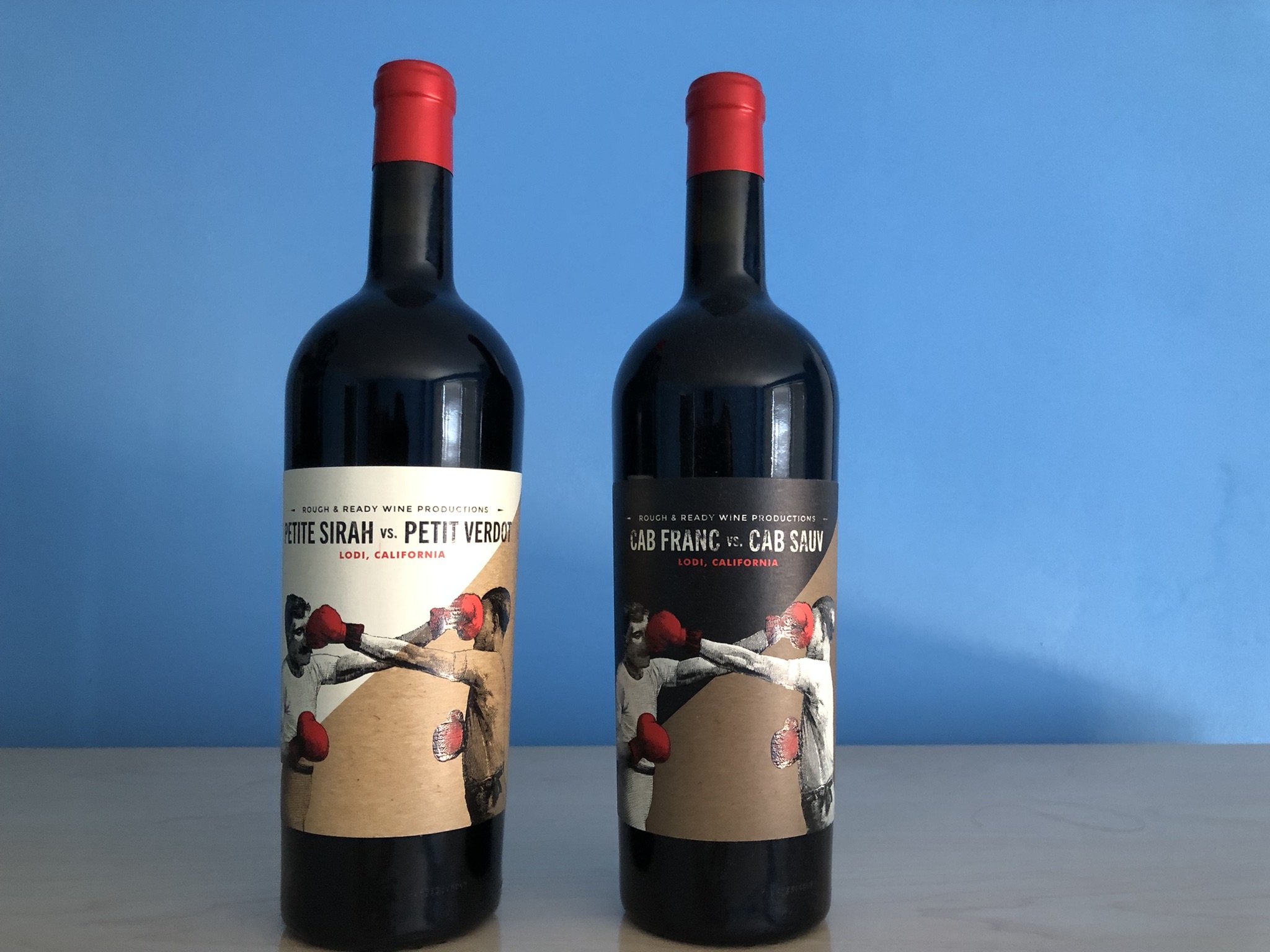How do I find the best red blend wines that aren’t Bordeaux?
Let’s celebrate red blends!
Let’s hear it for Red Blends!
Loud cheers!
Wait! What? Why am I cheering?
What even is a red blend?
Good question.
At its most basic, it is any red wine that is not made from just one grape variety. As in life, not everyone deserves a solo. Many varieties do better with a backup singer or two.
Bordeaux is one of the most well known of red blends. (Just in case you don’t know, these wines are usually a blend of Cabernet Sauvignon and Merlot.) For everything else, the more you know, the better choices you can make.
Let’s talk about some of the other red blends hiding in plain sight:
Chianti
Chianti is a red blend from the Tuscan region of Italy. The dominant grape is Sangiovese. There is a very wide range of quality.
Let’s take a step back and talk about the very many rules about wine making in the Old World.
What is Old World you may ask? (If you know this, skip on down.)
Just in case you didn’t read my post on The Best New Year’s Resolutions for Wine about comparing New World and Old World Chardonnay. (hint, hint. You could still read it by clicking on the link), I’m quoting from it here:
Many people refer just to Europe for Old World. More broadly it includes North Africa and the Middle East, but that is too much to unpack for our purposes. NEW WORLD is basically everywhere else. More specifically that is the United States, South America, Australia, New Zealand, and South Africa (South Africa actually has some wineries as old as those in Europe, but I didn’t make these rules). Some times Canada is included.
What you need to know:
Old World Wines usually have some sort of a Geographical Indicator (GI) listed on the label. Requirements can include where (geography), what (varietals used) and how (winemaking technique.) It goes from generic area to really specific, as in a specific vineyard within an already narrowly drawn area.
Generally, the more specific the label the higher the price. That is basic supply and demand. Whether the price is worth it and is more delicious for you - that is another matter. However, some wine makers will deliberately choose a less restrictive category so they can have more flexibility. (Although there will not be a quiz, it is helpful to remember this when we get to Super Tuscans.)
Back to Chianti.
If a wine is labeled Chianti, it can come from anywhere in the Chianti region. Many people think of Chianti as a cheap red wine with straw wrapping on the bottle. It can be so much more even at this level.
Next step up is Chianti Classico. These wines come from the original smaller area of the Chianti region. These are generally of a higher quality. Again, the smaller the area may yield better quality, but higher prices.
Here are 2 Chianti from Trader Joe’s.
The Chianti Classico is $7.99. The Chianti is $5.99. If you investigate at this price point, you can’t go wrong. Spoiler alert: I actually prefer the less expensive one for some reason. Taste is personal.
If a good wine is aged, it should become less tannic. However, if the wine isn’t a good one, the wine will just get old. Riserva wines will be aged 2 years. Gran Selezione will be aged at least 2.5 years, and will only be from Chianti Classico wines.
Personally, I feel most Italian wines are better with food. The food can help smooth out the acidity in the wine. While the best wines are balanced, sometimes they benefit from the flavors in food. With Chianti, think tomato sauce.
Moving on but staying in Italy:
Super Tuscans
When I mentioned above about wine makers wanting more flexibility, that is the origin story of the rise of Super Tuscans. Sorry. Couldn’t resist the reference to all the super hero movies. If you missed the reference, don’t worry about it.
Here’s the story:
In the 1980s, winemakers in Tuscany wanted to blend grapes with Sangiovese that were not typical Italian grapes. Think Cabernet and Merlot. While the wines may have been delicious and extremely high quality, they were just called Italian table wines because they weren’t following the rules of Tuscany. Being lumped with lowly table wines was a serious reputation and financial demotion.
Eventually the geographical indication (GI) term IGT was born. (In case you care, it stands for Indicazione Geografica Tipica.) This allowed for promoting the wines from the “lowly” table wine to a named designation. Woo! Validation! Higher Prices!
The term IGT can actually be used all over Italy, so look for the region Tuscany on the label if you want a Super Tuscan.
As with Chianti, quality and prices can vary widely. Experiment and see if you can find a favorite. Many of the better Super Tuscans are named. You will see it on the label. The original Super Tuscan is Tignanello which is seriously pricy now. You can do quite well with prices in the $20 range. See if you can find some favorites.
Let’s move on to France.
Rhone wines
Although the Rhone Valley is considered one vineyard area, it is geographically divided into Northern Rhone and Southern Rhone. As with many Old World Wines there is a distinct hierarchy.
Similar to all real estate, location matters.
In the North, the only red grape that can be used is Syrah. Interestingly enough, a white varietal can be blended with it, though. Steep slopes make it very expensive to pick grapes. Steep slopes allow for better drainage, by the way. The wines may be great but very pricey. Very, very pricey.
This is Northern Rhone.
Farming those steep slopes is hard! The wines may be delicious, but that hard work is factored into the price.
In the South it is flatter and the wines usually less expensive. This is where you will find Cotes du Rhone wines. These blends are often referred to as GSM wines. They are comprised of Grenache, Syrah and Mourvedre. However, 13 different varieties are allowed.
Within Cotes du Rhone, some of the wines are allowed to be called Cotes du Rhone Villages if they come from certain specified Villages. Even within the higher level there is a wide range of quality. Generally, the higher the price, the better the quality. As always, whether it is worth it is the question.
The next level up are even better wines that are allowed to add the specific Village name to the label. They don’t mess around with hierarchy in the Old World wines.
Châteauneuf du Pape is the most well known of the named areas in Southern Rhone. Generally, it will be the most expensive. It is up to you if you want to spend and investigate.
Meritage
You just can’t escape Bordeaux entirely. This is term used in the United States to describe Bordeaux style red blends. The term Bordeaux can only be used in Bordeaux.
Which brings me to…Wait for it!
Red Blends without a well known name!
Generally, these red blends are not very expensive. Have fun with them and experiment! Some are delicious. Some are, shall we say, not to my taste. While I do like fruit forward wines, I do not like sweet red wines. Some people may. Again, you aren’t spending a lot.
Rhone style red blends are very popular in the United States , but no official name has been invented for them yet. Depending on who is making them, the prices can get quite high.
When looking for red blends, try to find out what grapes are in it. Some wines are blended because the different grape varieties add up to so much more than the individual types. If you don’t like the underlying grapes, you are less likely to enjoy them.
These wines are both from Trader Joe’s.
It’s right on the label which grapes are in the mix. I actually have a preference. At under $10, check them both out and see if you like one more than the other.
Reasonably priced red blends can be found around the world. South Africa, South America, Australia, Southern France, New Zealand, and many other places make delicious ones. See what you can find!




